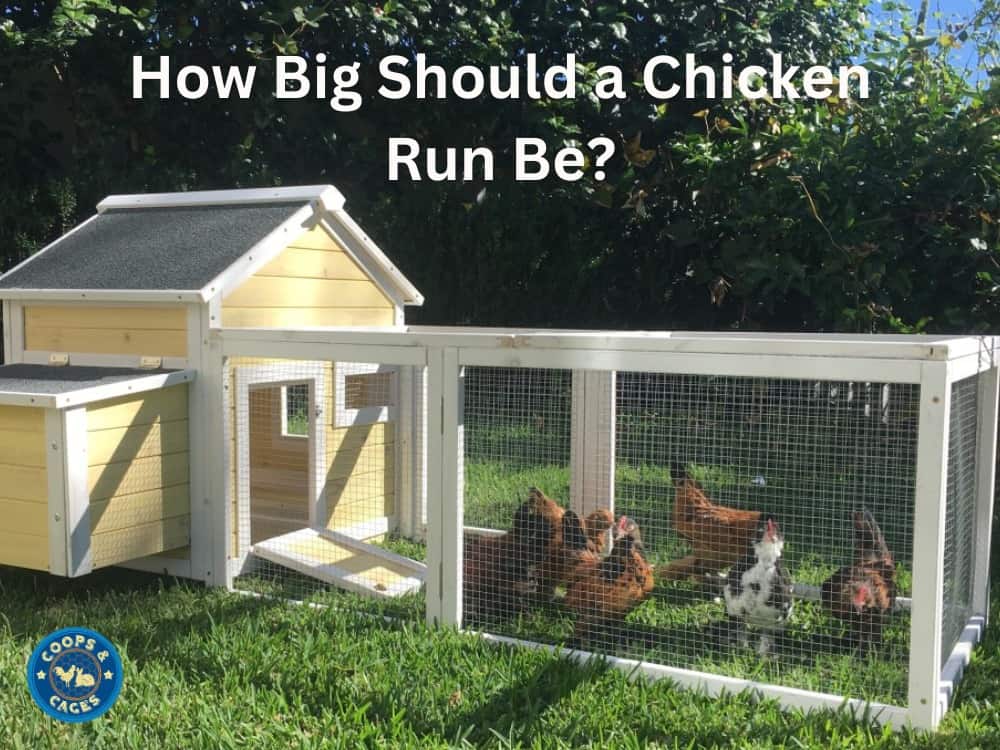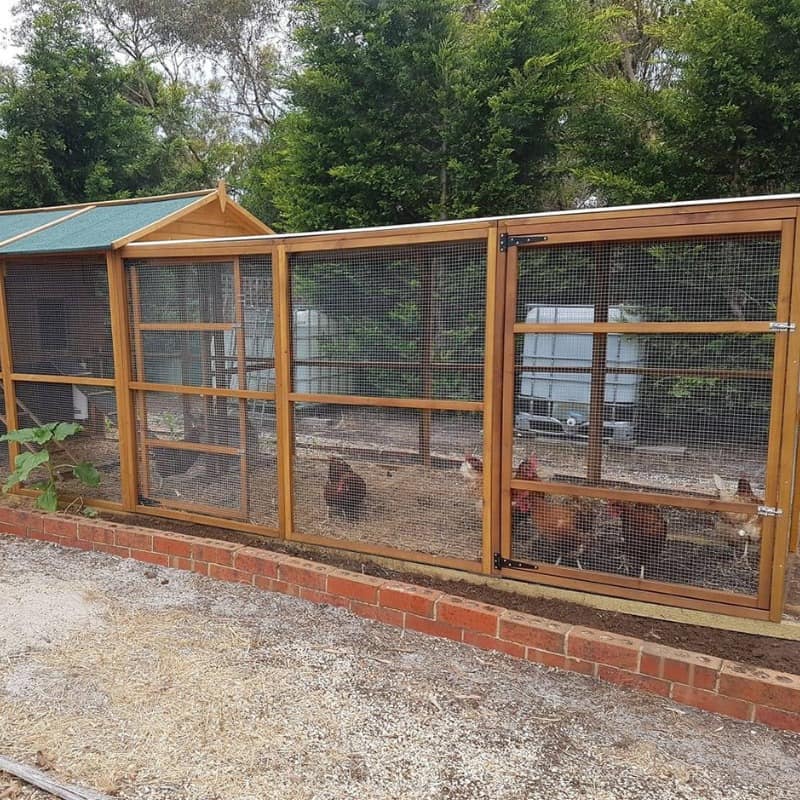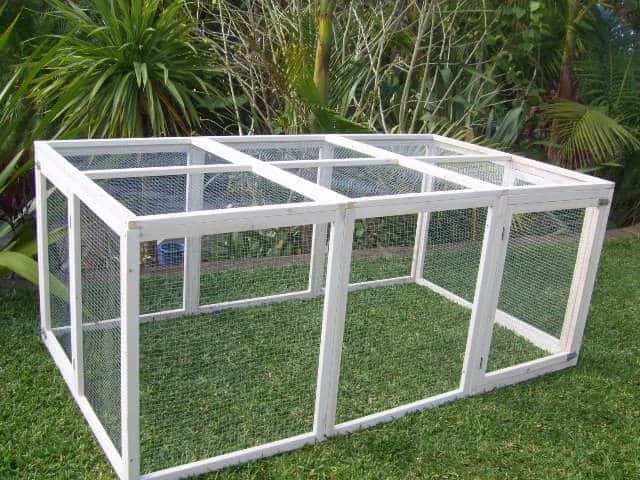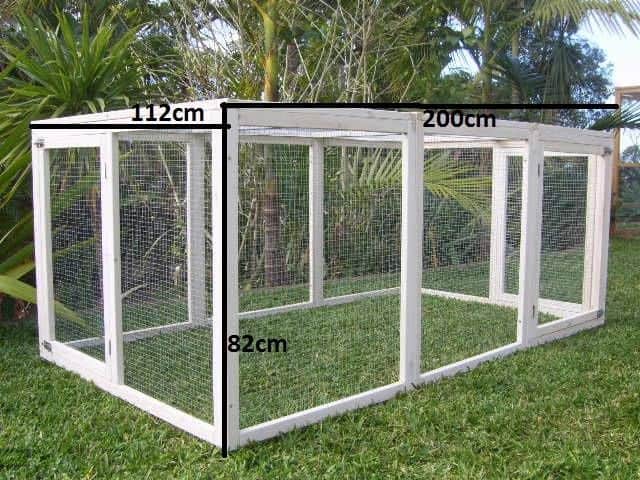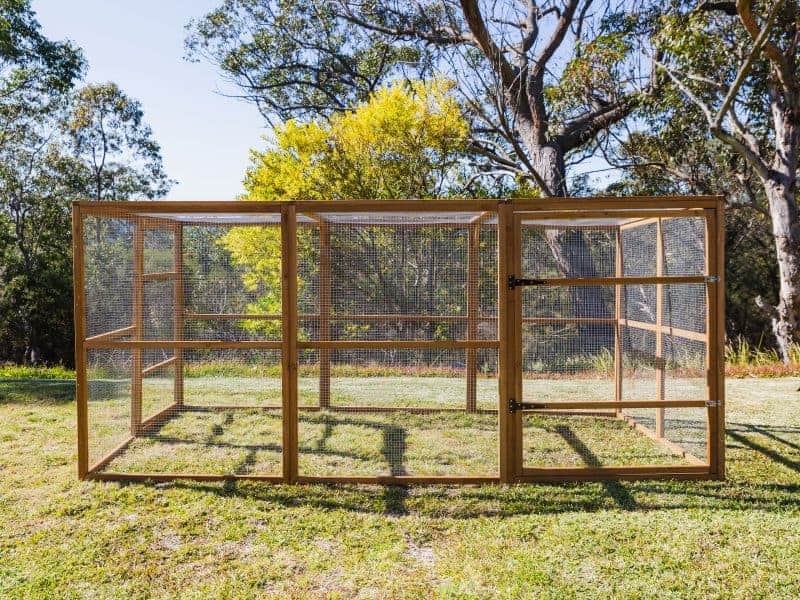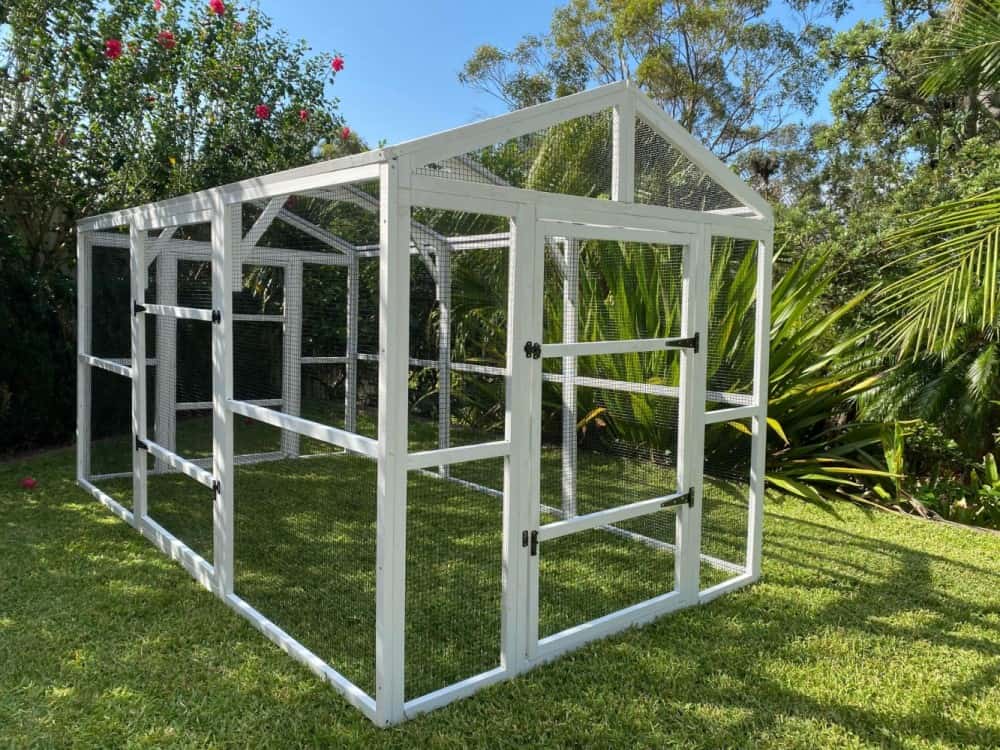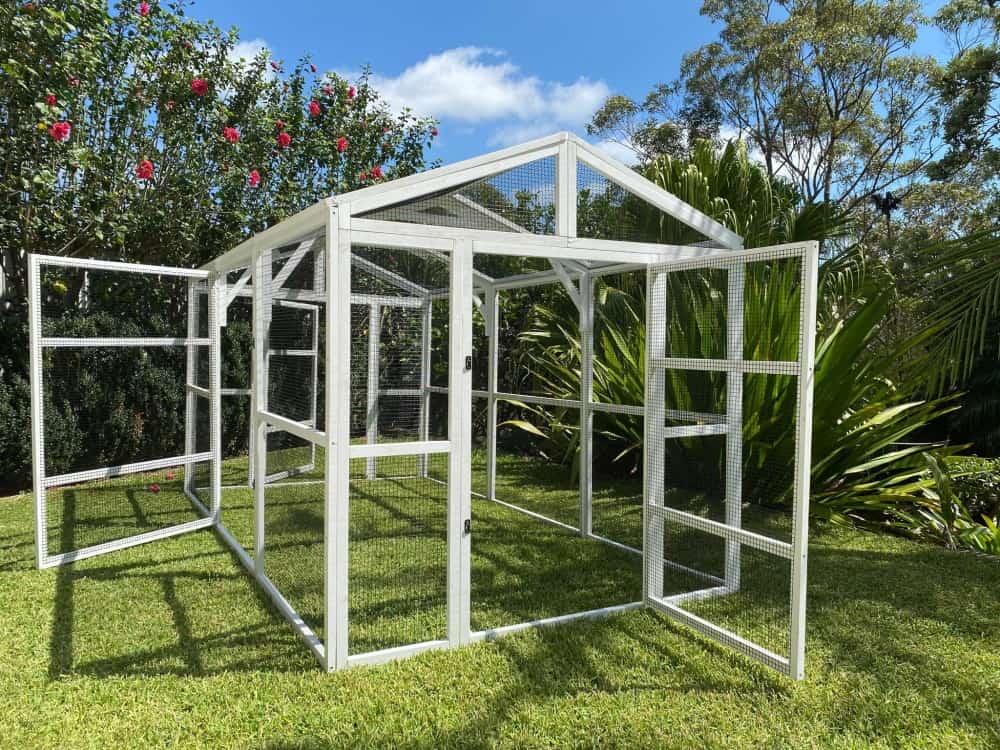Chickens, How To Do Things
How Big Should a Chicken Run Be?
Welcome to the ultimate guide on setting up a chicken run! Ever wondered, “How big should a chicken run be?” We’ve got you covered, exploring the crucial factors impacting your flock’s well-being, from health concerns to egg laying.
Discover DIY extensions, tips on sizing up for your flock, and insights on maintaining different-sized runs. If you’re considering purchasing a chicken run, we’ll overview quality products from Coops and Cages.
So, together let’s answer the question, “How big should a chicken run be?” Join us in creating a haven for happy, healthy hens!
Understanding the Importance of Chicken Run Size
Chicken coops provide chooks with an enclosed area for nighttime, featuring nesting boxes and roosting spaces. Meanwhile, chicken runs are an outdoor space where chickens can roam and exercise during the day.
Most chicken enclosures are all-in-one with an extension run attached to a coop so chooks can come and go as they please.
Providing your chickens with a suitable space to move and exercise is important. The size of your chicken run can have a significant impact on your flock’s well-being.
Health Issues
Chicken coop size might seem like no big deal at first glance but it can lead to some serious consequences. Chickens crammed into a small coop space may show signs of stress such as feather plucking and pacing.
Less personal space means the flock is more likely to struggle to determine a pecking order, leading to aggressive behaviour and fighting. Adequate spacing helps prevent diseases from spreading among your flock. The close quarters make it easier for parasites like mites and lice to spread amongst your flock.
For example, coccidiosis, an intestinal disease caused by parasites found in soil and feces, is less likely to spread when birds aren’t overcrowded.
Egg Production
Crowding causes stress which can result in reduced egg laying or even cause hens to stop laying altogether. In contrast, chickens with ample space tend to be healthier and more productive – laying eggs regularly without issues.
Basic Guidelines for Determining Chicken Run Size
The size of your chicken run plays a crucial role in the health and happiness of your flock. Let’s explore some guidelines to help you determine the ideal size.
Space Requirements
Provide a bare minimum of 1 square metre (10 square feet) of coop floor space per chicken. This gives them room to roam, peck, and express natural behaviours without overcrowding. But remember this is just a minimum guideline. If you can give more space, that’s even better!
Sizing Up For Your Flock
When determining space, chicken keepers should consider what chicken breeds they will keep. Our 1 square metre recommendation is for standard chickens however larger breeds (such as Brahmas) will need extra space while bantams (such as Silkies) can handle less space.
If you’ve got a mixed flock with different breed chickens in together, allow up to 1.5 square metres each to minimise fighting.
Consider Future Additions to Your Flock
If you plan on expanding your flock size down the line, it’s wise to design a larger run from the start. It saves effort and the extra cost later. This also gives your existing flock some extra room while waiting for new arrivals – reducing potential territorial disputes when introducing new birds.
Free Range
If you keep your flock confined in their coop for longer periods, you will need to purchase a larger run so they have more freedom to move. If you have free-range chickens that are let out into your yard every day to roam, you can have a smaller run area as they won’t be in it as often.
How to Expand Your Existing Chicken Run
If your chickens spend extended periods inside their coop and you’re worried it’s too small, consider adding on an extension run.
DIY Extensions
The first option is to build a chicken run yourself from scratch. You can either draw up a chicken coop plan yourself or you may be able to find a plan online that suits your yard.
Purchase quality materials from a hardware store including wooden framing, wire fencing, screws, a staple gun and a battery-powered screwdriver. This can get quite expensive so try to repurpose any leftover building materials you have from previous projects.
To enhance functionality, consider adding features such as a hinged door for easy access and covered areas for shade. Building a run yourself can be a fun project but it requires skill and can take up a lot of time.
Purchasing A Chicken Run
It is easier and cheaper to buy a flatpack chicken run like those sold here at Coops and Cages. We sell three styles that can be attached as extensions on certain chicken coops we sell.
Assembly is simple! They come in panels with the wire mesh already stapled onto the frame and the timber already stained. You just need to line the panels up and screw them together using a battery-powered screwdriver – no complicated woodwork required!
Maintenance Practices for Different-Sized Runs
Looking after your chook run is important to keep your backyard chickens happy. But the way you do it can change depending on its size.
Cleaning Practices
A small chicken run could get dirty quickly because of minimum space. This means that you’ll have to clean it out frequently – perhaps even daily. But don’t fret; cleaning a small area won’t take too much time or effort.
In contrast, large chicken runs will take longer to muck out simply due to their size. The good news? You probably won’t need to do this as often because there’s more room for droppings and feathers to spread out before things start looking messy.
Feeding Arrangements
With smaller coops and runs, feeding your chickens isn’t much of an issue – one feeder should suffice since all birds can easily access it.
If your coop floor is larger though, consider adding extra feeders across the area so each chook has easy access without feeling crowded or stressed at meal times. This strategy helps prevent bullying behaviour where dominant birds control food sources while leaving others hungry.
Monitoring Health
In smaller spaces with a small number of chickens, spotting health issues with your hens becomes straightforward due to fewer hiding places – sick birds can’t go unnoticed for very long.
The challenge comes when dealing with larger coops: With extra space chickens can roam around in, keeping an eye on every bird can be tough. You’ll need to invest more time into observing their behaviour and looking out for signs of illness.
Shopping for Quality Chicken Runs at Coops and Cages
If you’re looking to extend your enclosure for happy chickens, Coops and Cages can help. With an array of top-notch chicken coops and runs on offer, we have something that’ll suit every yard.
Finding Your Perfect Size Chicken Coop
We understand that size matters when it comes to keeping chickens healthy and content. Each bird needs its space – so don’t cram them in.
We’ve got coops ranging from small backyard styles right up to large chicken coops for 12 birds. So whether you’re starting out with just a few birds or expanding your brood, there’s bound to be something that fits your flock perfectly.
Durable Materials That Last
Quality isn’t just about size though; materials count too. Our products are built using strong timber designed to withstand Aussie weather conditions.
All our enclosures come with sturdy wire mesh for maximum security against foxes or other unwanted visitors looking for an easy meal.
Ease of Use and Maintenance
No one wants cleaning duties to feel like pulling teeth. That’s why our coop designs include features such as slide-out trays for simple cleaning.
In addition, we ensure access points are practical with large opening doors – so feeding times and health checks are a breeze.
Adding That Extra Bit of Comfort
A coop isn’t just a place to roost – it’s home sweet home for your hens.
We stock coops with in-built nesting boxes, providing privacy for egg-laying, while perches offer the perfect spot for some well-deserved rest after a hard day of pecking and preening.
Our Runs
We currently sell three styles of chicken run:
- Resort Run: Can be used as a standalone run or attached to our Resort Coop.
- Large Run: Can be used as a standalone run or joined onto the Somerzby Estate Coop.
- Castle Run: Can be used as a standalone run or joined onto our Castle Coop.
FAQ
Can A Chicken Run Be Too Big?
A bigger run is usually better for your chooks’ happiness and well-being. But remember, larger runs demand more maintenance.
What Size Coop Do I Need For 10 Chickens?
If your 10 chickens stay inside their coop full time and don’t free-range, your coop floor space should measure no less than 10 square metres (107 square feet).
Jordan’s Wrap
How big should a chicken run be? Well, we generally recommend 1 square metre (10 square feet) of run space per chicken. But this can vary depending on whether your chooks free range or spend all their time inside the actual chicken coop.
Not allowing your flock enough personal space can lead to health issues, decreased egg laying and aggressive behaviour.
If your existing coop is too small and you want to show your chickens love, consider adding an extension run. And remember that larger coops can require extra maintenance!
When shopping for quality chicken runs, remember Coops and Cages. We offer three styles of chicken run plus a huge selection of coops and coop and run packages to suit every backyard.



